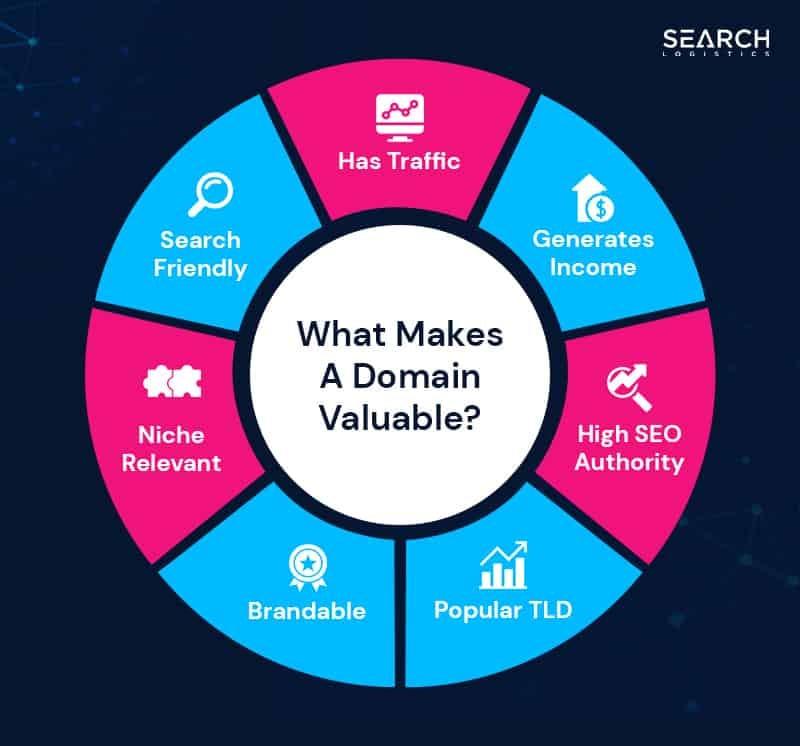Table of Contents
- Understanding the Domain Flipping Business Model
- Identifying Profitable Domain Names
- Effective Strategies for Buying and Selling Domains
- Marketing Your Domain Portfolio for Maximum Value
- Common Mistakes to Avoid in Domain Flipping
- Q&A
- Future Outlook


Understanding the Domain Flipping Business Model
Domain flipping is an intriguing venture that appeals to both seasoned investors and newcomers alike. At its core, the process involves acquiring domain names at a lower price and subsequently selling them for a profit. This practice thrives on the principle of buying undervalued domains that possess the potential for future appreciation. Success in domain flipping hinges on a few critical strategies that can enhance the chances of a profitable sale.
When diving into the domain flipping market, it’s essential to focus on the following factors to identify valuable domains:
- Keyword Relevance: Domains that contain popular keywords or phrases are often more desirable and can command higher prices.
- Brandability: Short, memorable, and catchy names are easier to sell. Businesses prefer domains that effectively convey their brand message.
- Domain Extension: While .com domains are typically the most sought-after, other extensions like .net, .co, and localized domains also present profitable opportunities.
Once you’ve acquired a domain with potential, it’s crucial to implement effective marketing strategies to boost visibility and attract potential buyers. Establishing a robust online presence can set your domains apart in a competitive market. Here are some effective marketing techniques:
- Develop a Professional Listing: Create an eye-catching and informative listing on popular marketplaces.
- SEO Optimization: Utilize search engine optimization strategies to enhance your domain’s visibility on search engines.
- Networking: Engage with communities and forums related to domain trading, where you can connect with potential buyers.
Ultimately, the domain flipping business model requires a combination of research, creativity, and marketing expertise. Those who dedicate the time to understand market trends and buyer preferences tend to reap the greatest rewards in this dynamic digital landscape. Whether you’re looking to start a side hustle or dive into full-time entrepreneurship, mastering the art of domain flipping can lead to exciting profit potential.


Identifying Profitable Domain Names
When it comes to turning a profit in the domain flipping business, your first step is identifying domain names with high potential value. A well-chosen domain can significantly enhance your chances of making a lucrative sale. Here are some key characteristics to look for:
- Length: Shorter domain names tend to be more memorable and desirable. Aim for domains that are 1-3 words long.
- Keyword relevance: Incorporate relevant keywords that could improve search engine rankings and attract specific audiences.
- Brandability: A catchy and easily pronounceable name enhances the domain’s marketability to potential buyers.
- Extension choice: While .com domains are often preferred, consider other extensions (.net, .co, .io) that are relevant to the niche.
To narrow down your options, conducting thorough research is vital. Utilize domain name generators, and check existing websites for similar names. Explore marketplace platforms or domain auctions to gauge current trends and prices. A simple analysis can shed light on what resonates well with buyers. Here’s a brief overview of effective research tools:
| Tool | Purpose |
|---|---|
| Ubersuggest | Keyword suggestions and domain ideas. |
| GoDaddy Auctions | View current market values and offers. |
| Estibot | Valuation tool for domain names. |
Another integral aspect of your search involves considering trending niches. Stay updated with industry news, cultural phenomena, and emerging technologies that could influence demand. Look for domains that reflect these trends, creating a timely opportunity for resale. This proactive approach not only increases your chances of buying a domain at a low cost but also positions you effectively in the market for a profitable flip.
Effective Strategies for Buying and Selling Domains
Mastering the art of domain flipping requires a blend of strategy, market insight, and a touch of creativity. One effective approach to buying domains is to focus on keyword-rich names that align with popular search trends. Utilizing tools like Google Trends, you can identify rising keywords in various industries. When you find potential domains, check their history and backlink profile using platforms such as Moz or SEMrush to ensure they have a clean slate and don’t carry any negative SEO baggage.
When it comes to selling, presentation is key. Develop a strong value proposition for your domain by highlighting its benefits, such as short length, memorable spelling, and brandability. Consider creating a professional landing page showcasing your domain. It should feature persuasive sales copy, a strong call-to-action, and relevant examples of how the domain can be used effectively. Additionally, leverage social media and domain marketplaces such as Sedo or Flippa to reach potential buyers effectively.
Lastly, timing your transactions can greatly impact profits. A simple table can help you track purchase and sale prices over time, enabling you to identify the best moments to sell:
| Domain Name | Purchase Price | Sale Price | Purchase Date | Sale Date |
|---|---|---|---|---|
| exampledomain.com | $500 | $2000 | 01/01/2023 | 05/01/2023 |
| successstory.net | $300 | $1200 | 02/10/2023 | 08/15/2023 |


Marketing Your Domain Portfolio for Maximum Value
To maximize the value of your domain portfolio, it’s essential to adopt a strategic marketing approach. Start by showcasing your domains on well-trafficked platforms where potential buyers are actively searching. Listing your domains on online marketplaces like Sedo, Flippa, or Afternic can significantly boost visibility. Make sure your listings are compelling by offering clear descriptions and highlighting the potential uses of each domain. To enhance discoverability, ensure each listing includes targeted keywords that align with potential buyer searches.
Another effective strategy is to leverage social media and community engagement. Utilizing platforms like Twitter, LinkedIn, and niche forums allows you to connect directly with prospective buyers. Share insights about the domain market, industry trends, and the unique advantages of owning certain domains from your portfolio. Participating in discussions and offering value in online groups can establish your credibility as a domain seller, increasing the likelihood of inquiries and sales.
Lastly, consider employing personalized outreach to potential buyers. Research businesses or individuals that align with the themes of your domains and reach out directly via email or social media. Tailor your message to each recipient, explaining how a domain could enhance their online presence or branding. This targeted approach can lead to higher conversion rates than generic listings alone. To summarize, you can enhance your marketing strategy with a mix of effective platforms, community interaction, and personalized outreach.


Common Mistakes to Avoid in Domain Flipping
When venturing into the world of domain flipping, many enthusiasts often trip up by neglecting proper research before purchasing domains. Conducting thorough keyword research is critical. Identify trending keywords and assess their market value. Domains that incorporate popular keywords can see a notable uptick in demand. Additionally, always check the domain’s history using tools like WHOIS to avoid inheriting past issues that could jeopardize future sales.
Another common error is underestimating the importance of domain quality. Not all domains are created equal. Avoid purchasing domains that are overly complex, difficult to spell, or possess numerals if your target audience is broader. It’s crucial to focus on domains that are short, memorable, and easy to pronounce. A good rule of thumb is to aim for domains that can be pronounced correctly without additional thought. This significantly enhances your chances of a successful resale.
Lastly, many flippers fail to establish a solid marketing strategy for their domains. Simply owning a valuable domain doesn’t guarantee profit; you need to actively promote it. Create a simple landing page showcasing the domain’s potential uses, or utilize platforms like Sedoh and Flippa to list your domains effectively. Consider the target audience when crafting your marketing message, and don’t shy away from leveraging social media to reach potential buyers. Here’s a quick overview of platforms where you can advertise your domain:
| Platform | Best For |
|---|---|
| Sedoh | High-quality domain listings |
| Flippa | Auction-style sales |
| NamePros | Domain flipping community |
| eBay | Broader audience reach |
Q&A
Q&A: Domain Flipping Made Easy
Q1: What is domain flipping? A: Domain flipping refers to the practice of purchasing domain names with the intention of reselling them at a profit. It’s akin to real estate flipping but in the digital landscape. Entrepreneurs purchase domains that they believe will have value and can sell to interested buyers later. Q2: How do I start flipping domains? A: To start flipping domains, follow these steps: Research popular keywords and trends to identify desirable domain names, purchase these domains through a registrar, enhance their value by building a simple site or optimizing for SEO, and finally list them on a marketplace or auction site for resale. Q3: What makes a domain valuable? A: A domain is valuable based on several factors: its length (shorter is typically better), the inclusion of relevant keywords, its brandability, its extension type (.com, .org, etc.), and its overall marketability. Domains that are memorable and easy to spell often fetch higher prices. Q4: Where can I buy and sell domains? A: You can buy domains through registrars like GoDaddy or Namecheap. For selling, consider platforms like Sedo, Flippa, or Afternic, which cater specifically to domain investors. You can also leverage social media or online communities to promote your domains. Q5: Is domain flipping a profitable venture? A: Yes, domain flipping can be profitable, but success depends on market knowledge and strategy. Some flippers make substantial profits by identifying trends and acquiring undervalued domains. However, like any investment, it comes with risks and requires thorough research and patience. Q6: How can I increase the chances of selling my domains? A: To increase your chances of selling domains, focus on marketing them effectively. Use compelling descriptions, highlight the potential uses for the domain, and utilize SEO techniques to make them more discoverable. Engaging in networking and building relationships within the domain flipping community can also lead to potential buyers. Q7: What should I avoid when flipping domains? A: Avoid purchasing domains that are too niche or have no clear market demand. Additionally, steer clear of domains that infringe on trademarks, as this can lead to legal issues. Lastly, don’t rush into listings; take the time to evaluate a domain’s true worth before selling. Q8: Is it necessary to have a website to flip domains? A: While having a website can enhance a domain’s value, it’s not strictly necessary. Many flippers successfully sell domains without building a website by focusing on the domain’s potential and marketing it wisely. A landing page with contact information can suffice to facilitate inquiries. Q9: How long does it typically take to sell a domain? A: The time it takes to sell a domain can vary widely based on its attractiveness and market demand. Some domains may sell within days, while others could take months or even years. Patience and persistence are key in this business. Q10: What are the best resources for learning more about domain flipping? A: There are numerous resources for aspiring domain flippers, including online communities, forums like DNForum, and educational websites that focus on digital entrepreneurship. Additionally, books and online courses that cover the fundamentals of domain investment and valuation can be incredibly helpful.With these insights, you’ll be better equipped to navigate the world of domain flipping, whether you’re just starting out or looking to enhance your existing strategy!

